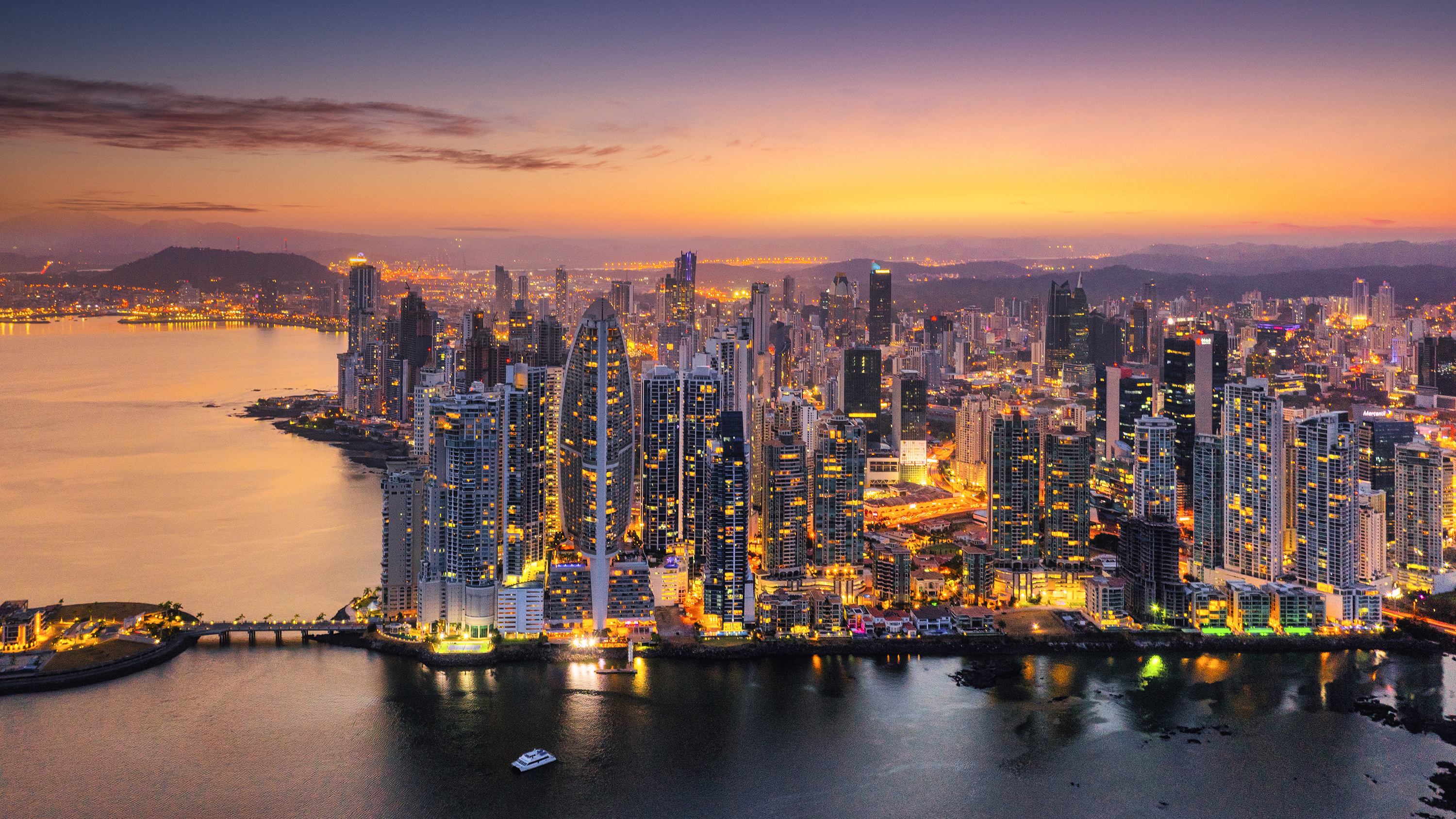
Panama, a vibrant and diverse country in Central America, holds a treasure trove of interesting facts and fascinating trivia. Nestled between Costa Rica and Colombia, this isthmus nation is renowned for its stunning natural beauty, rich cultural heritage, and the iconic Panama Canal. With a population of approximately four million people, Panama boasts a dynamic blend of indigenous, European, and Afro-Caribbean influences.
In this article, we will delve into 47 captivating facts about Panama that shed light on its history, geography, culture, economy, and more. From the ancient indigenous civilizations that once thrived in the region to the modern marvel of engineering that is the Panama Canal, there is much to discover and appreciate about this captivating country.
Key Takeaways:
- Panama, a small country in Central America, is a treasure trove of natural wonders, from the famous Panama Canal to diverse wildlife and stunning landscapes, making it a paradise for adventure seekers and nature enthusiasts.
- With a rich cultural heritage, vibrant festivals, and warm hospitality, Panama offers a unique blend of history, art, and outdoor activities, making it an exciting and welcoming destination for travelers of all ages.
Panama is located in Central America.
Located between Costa Rica and Colombia, Panama serves as the southernmost country in Central America.
Panama Canal is a marvel of engineering.
The Panama Canal, stretching 50 miles from the Atlantic Ocean to the Pacific Ocean, is a remarkable feat of human engineering and connects major international trade routes.
Panama is known for its diverse wildlife.
With lush rainforests and unique ecosystems, Panama is home to a wide variety of species, including tapirs, jaguars, monkeys, and over 970 species of birds.
Panama has over 1,500 islands.
The archipelago of Panama consists of more than 1,500 islands, offering incredible opportunities for exploration and beach retreats.
The official language of Panama is Spanish.
Spanish is the predominant language spoken in Panama, although many Panamanians also speak English due to its importance in international business.
Panama is home to the indigenous Guna Yala people.
The Guna Yala, also known as the Kuna, are an indigenous group living in the San Blas Islands who have preserved their traditional way of life and artwork.
The Panamanian currency is the balboa.
Although the U.S. dollar is widely accepted in Panama, the national currency is the balboa, which has the same value as the U.S. dollar.
Panama has the only rainforest within city limits.
Metropolitan Park in Panama City is a sprawling tropical rainforest located within the city, offering a unique and verdant escape.
Panama is a biodiversity hotspot.
With its rich ecosystems, Panama is considered one of the most biodiverse places in the world, housing approximately 10,000 species of plants.
Panama is famous for its coffee.
Panama is renowned for its high-quality coffee beans, which are grown in the mountainous regions and have a rich and distinct flavor.
Panama celebrates Carnival in a vibrant way.
During Carnival season, Panama comes alive with colorful parades, music, dancing, and festivities that last for several days.
The Coiba National Park is a UNESCO World Heritage Site.
The Coiba National Park, located off the Pacific coast of Panama, is recognized by UNESCO for its exceptional biodiversity and pristine marine ecosystems.
Panama has two coastlines – the Pacific Ocean and the Caribbean Sea.
With coastlines on both the Pacific Ocean and the Caribbean Sea, Panama offers stunning beaches and diverse marine life.
Panama has the lowest population in Central America.
With a population of approximately 4 million people, Panama has the lowest population among the Central American countries.
Panama is a popular retirement destination.
Thanks to its tropical climate, affordable cost of living, and excellent healthcare facilities, Panama attracts many retirees from around the world.
Panama is known for its famous hat – the Panama hat.
Contrary to its name, the iconic Panama hat is actually made in Ecuador but gained popularity when worn by workers during the construction of the Panama Canal.
The Panamanian cuisine is diverse and flavorful.
Panamanian cuisine combines influences from Indigenous, Spanish, and Afro-Caribbean cultures, resulting in a delicious fusion of flavors and dishes.
Panama City is the only capital city with a rainforest within its boundaries.
As mentioned before, Metropolitan Park in Panama City offers a unique natural retreat within the bustling cityscape.
Panama is home to the Harpy Eagle.
The Harpy Eagle, one of the largest and most powerful birds of prey in the world, can be found in the tropical forests of Panama.
The Golden Frog is a symbol of Panama’s conservation efforts.
The endangered Golden Frog, endemic to Panama, has become a symbol of the country’s commitment to environmental conservation.
Panama has a rich history and indigenous heritage.
Before the arrival of the Spanish, Panama was inhabited by various indigenous groups, each with their own unique cultures and traditions.
The Pan-American Highway passes through Panama.
The Pan-American Highway, which spans from Alaska to Argentina, passes through Panama, making it an important transportation hub.
Panama is home to the Embera people.
The Embera, one of the indigenous groups of Panama, have preserved their traditional way of life and are known for their intricate basket weaving and vibrant artwork.
Panama boasts stunning natural landscapes.
From pristine beaches to lush rainforests and towering mountains, Panama offers a diverse range of breathtaking natural landscapes.
Panama City is a vibrant cultural hub.
With its modern skyscrapers, historical sites, museums, and bustling markets, Panama City showcases the dynamic cultural heritage of the country.
Panama has a tropical climate.
Panama experiences a tropical climate with warm temperatures throughout the year, making it an ideal destination for sunseekers.
Panama has a thriving music scene.
From traditional folklore music to contemporary genres like reggaeton, Panama has produced many talented musicians who have gained international recognition.
Panama is a tax haven.
Due to its strategic location and favorable financial policies, Panama has become a popular destination for offshore banking and business operations.
Panama celebrates its independence on November 3rd.
On November 3rd, Panama commemorates its separation from Colombia and the establishment of an independent nation.
Panama has a diverse population.
With influences from Indigenous, European, African, and Asian cultures, Panama is a melting pot of different ethnicities and traditions.
Panama has a thriving ecotourism industry.
With its abundance of natural wonders, Panama offers numerous eco-friendly activities and sustainable tourism options for nature enthusiasts.
Panama is home to the Kuna women who create colorful molas.
The Kuna women, part of the Guna Yala indigenous group, are known for their vibrant and intricate fabric art called molas.
Panama has a strong coffee culture.
Coffee is an integral part of Panamanian culture, and many coffee farms offer tours and tastings to showcase the country’s premium coffee beans.
Panama is a paradise for birdwatching enthusiasts.
With its diverse avian population, including rare and endemic species, Panama attracts birdwatchers from around the world.
Panama is a top destination for sport fishing.
The abundant marine life and access to both the Pacific Ocean and the Caribbean Sea make Panama a popular destination for sport fishing enthusiasts.
Panama has a strong tradition of craftsmanship.
Artisans in Panama create handmade crafts such as pottery, woven baskets, and intricate jewelry using traditional techniques passed down through generations.
Panama has a growing technology and startup scene.
With investments in infrastructure and a supportive business environment, Panama is becoming a hub for technology startups and innovation.
Panama has a fascinating pre-Columbian history.
Archaeological sites in Panama reveal evidence of pre-Columbian civilizations, including the impressive ruins of the ancient city of Panama Viejo.
Panama is famous for its vibrant and colorful traditional festivals.
Celebrations such as the Corpus Christi procession and the Pollera Festival showcase the richness of Panamanian folklore and traditional attire.
Panama is a bridge between North and South America.
Geographically and culturally, Panama serves as a connecting point between the continents of North and South America.
Panama is known for its rich cigar culture.
Panamanian cigars, often made from locally grown tobacco, are highly regarded among cigar aficionados worldwide.
Panama is home to the Smithsonian Tropical Research Institute.
The Smithsonian Tropical Research Institute in Panama conducts scientific research on tropical ecosystems and plays a vital role in conservation efforts.
Panama has a diverse and thriving art scene.
Galleries and art spaces in Panama showcase the works of talented local artists, representing various styles and artistic expressions.
Panama has a growing film industry.
Panama is gaining recognition for its film industry, producing critically acclaimed movies and hosting film festivals.
Panama is one of the top retirement destinations for North Americans.
Due to its attractive retirement programs, affordable healthcare, and pleasant climate, Panama attracts many retirees from North America.
Panamanians are known for their warm hospitality.
The people of Panama are welcoming and friendly, making visitors feel at home and creating a memorable travel experience.
Panama offers a wide range of outdoor activities.
From hiking and zip-lining through the rainforests to surfing and snorkeling in crystal-clear waters, Panama offers endless opportunities for adventure seekers.
Conclusion
In conclusion, Panama is a country full of rich history, diverse culture, and incredible natural beauty. From the famous Panama Canal to its stunning beaches and vibrant cities, there is something for everyone to enjoy. Whether you’re a nature enthusiast, history buff, or adventure seeker, Panama offers a multitude of unique experiences.
Explore its lush rainforests, encounter diverse wildlife, or immerse yourself in the energetic atmosphere of Panama City. Don’t forget to try the delicious local cuisine and experience the warmth and hospitality of the Panamanian people.
With its strategic location, stable economy, and robust infrastructure, Panama serves as a gateway to both North and South America. Its rapidly developing tourism industry is attracting visitors from all around the world, making it a top travel destination.
Whether you’re planning a relaxing beach vacation, an eco-adventure, or a cultural exploration, Panama has it all. So pack your bags and get ready to experience the wonders that this extraordinary country has to offer.
FAQs
1. What is the capital city of Panama?
The capital city of Panama is Panama City, which is also the largest city in the country.
2. Is Panama safe for tourists?
Yes, Panama is generally considered safe for tourists. However, it is always important to take common safety precautions and be aware of your surroundings.
3. Can I drink the tap water in Panama?
While the tap water in Panama City is generally safe to drink, it is recommended to stick to bottled water in other areas of the country.
4. What is the official language of Panama?
The official language of Panama is Spanish. However, many Panamanians also speak English, especially in tourist areas.
5. Do I need a visa to visit Panama?
Visa requirements vary depending on your nationality. Some countries may require a visa in advance, while others can obtain a tourist visa upon arrival.
6. What is the currency of Panama?
The official currency of Panama is the Panamanian Balboa (PAB). However, the US dollar is widely accepted and used interchangeably with the Balboa.
7. Are there any travel restrictions in Panama?
Travel restrictions may vary depending on current situations or events. It is advised to check the latest travel advisories and guidelines before planning your trip to Panama.
Panama's rich tapestry of culture, history, and natural wonders is truly captivating. From the mouthwatering flavors of Panamanian cuisine to the country's commitment to education and technological innovation, there's so much more to explore. Delve into the tantalizing world of Panama's culinary delights, uncover the nation's dedication to learning, and be amazed by the cutting-edge advancements in Panama City, Florida. Embark on a journey of discovery as you unravel the fascinating facets of this Central American gem.
Was this page helpful?
Our commitment to delivering trustworthy and engaging content is at the heart of what we do. Each fact on our site is contributed by real users like you, bringing a wealth of diverse insights and information. To ensure the highest standards of accuracy and reliability, our dedicated editors meticulously review each submission. This process guarantees that the facts we share are not only fascinating but also credible. Trust in our commitment to quality and authenticity as you explore and learn with us.


